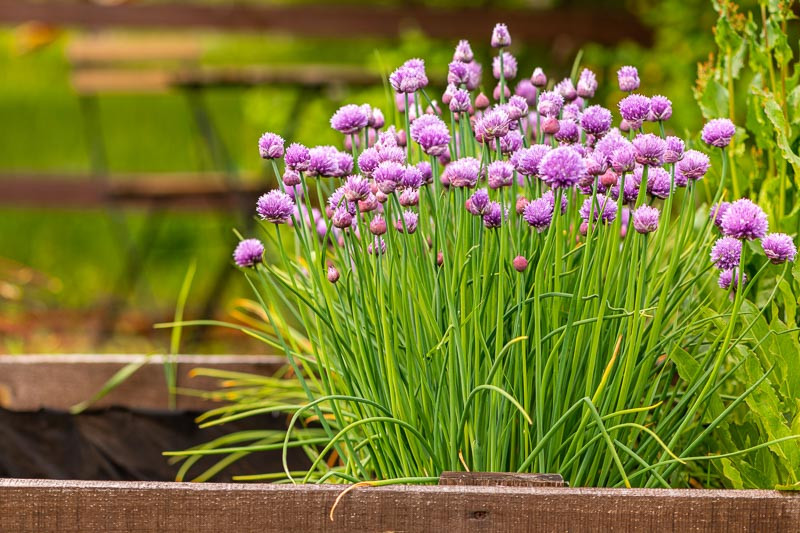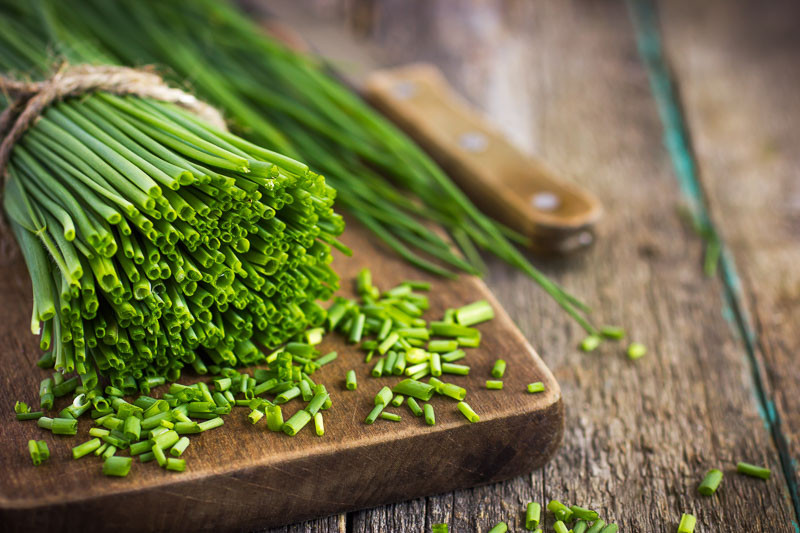Planting Chives, Growing Chives, Harvesting Chives, Allium schoenoprasum, Allium tuberosum
Chives are a popular culinary herb in the home garden. Grown for the mild onion flavor of their leaves and pretty flowers, they attract bees and other pollinators to the garden while helping deter damaging insects such as Japanese beetles. Used in cooking for over 5000 years, Chives are also cultivated for their ornamental value in flower gardens and traditionally have been used for their medicinal properties. Easy to grow, they are rewarding little plants to grow outdoors in the garden or indoors in pots.

| Hardiness |
3 - 9 |
|---|---|
| Plant Type | Bulbs, Herbs |
| Genus | Allium |
| Exposure | Full Sun |
| Maintenance | Low |
| Water Needs | Average |
| Soil Type | Chalk, Clay, Loam, Sand |
| Soil pH | Acid, Alkaline, Neutral |
| Soil Drainage | Moist but Well-Drained, Well-Drained |
| Characteristics | Fragrant, Showy |
| Tolerance | Drought, Deer, Rabbit |
| Attracts | Bees, Butterflies |
| Landscaping Ideas | Patio And Containers, Edging, Beds And Borders |
| Garden Styles | Gravel and Rock Garden, Informal and Cottage |

Anna Shepulova, Svetlana Monyakova, Julia Shepeleva, Shuttertock
| Hardiness |
3 - 9 |
|---|---|
| Plant Type | Bulbs, Herbs |
| Genus | Allium |
| Exposure | Full Sun |
| Maintenance | Low |
| Water Needs | Average |
| Soil Type | Chalk, Clay, Loam, Sand |
| Soil pH | Acid, Alkaline, Neutral |
| Soil Drainage | Moist but Well-Drained, Well-Drained |
| Characteristics | Fragrant, Showy |
| Tolerance | Drought, Deer, Rabbit |
| Attracts | Bees, Butterflies |
| Landscaping Ideas | Patio And Containers, Edging, Beds And Borders |
| Garden Styles | Gravel and Rock Garden, Informal and Cottage |
Create a membership account to save your garden designs and to view them on any device.
Becoming a contributing member of Gardenia is easy and can be done in just a few minutes. If you provide us with your name, email address and the payment of a modest $25 annual membership fee, you will become a full member, enabling you to design and save up to 25 of your garden design ideas.
Join now and start creating your dream garden!
Create a membership account to save your garden designs and to view them on any device.
Becoming a contributing member of Gardenia is easy and can be done in just a few minutes. If you provide us with your name, email address and the payment of a modest $25 annual membership fee, you will become a full member, enabling you to design and save up to 25 of your garden design ideas.
Join now and start creating your dream garden!